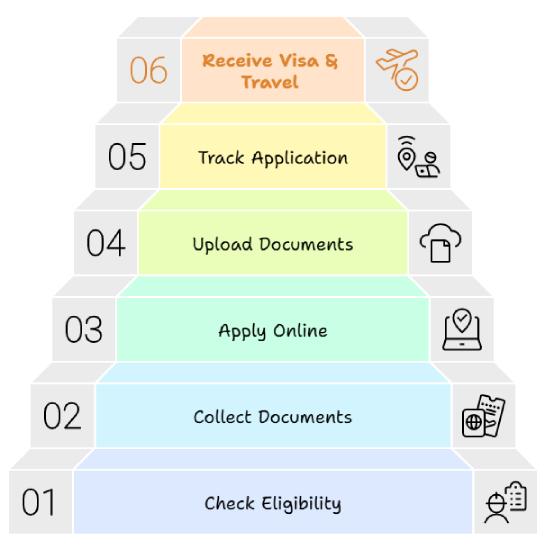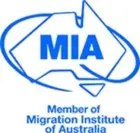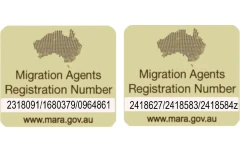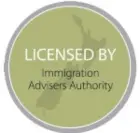Subclass 400 - Temporary Work Visa
Are you planning to work in Australia for a short period on specialised projects? The Subclass 400 Temporary Work (Short Stay Specialist) visa allows skilled professionals to handle urgent or critical assignments that need expertise not easily available locally. Even though it’s a short-term visa, it offers a great opportunity to gain Australian work experience, contribute to important projects, and bring eligible family members along under similar conditions.
Visa Highlights:
- Visa Type: Temporary Work (Short Stay Specialist) – Subclass 400.
- Application Location: Must be applied for from outside Australia (offshore only).
- Visa Extension: Cannot be extended while in Australia as a new application is required for additional time.
- Support Required: Requires a letter or evidence from an Australian organisation showing a genuine, short-term, highly specialised need.
- Work Rights: Restricted to the specific employer and activity approved under condition 8107.
Subclass 400 Visa Key Updates
- Stay Duration: Usually up to 3 months. In exceptional cases, stays of up to 6 months may be allowed with strong justification.
- Application Frequency: You cannot apply for multiple Subclass 400 visas within a 12-month period.
- Visa Fees: Application charges increased by 4.6% from July 2025.
- Longer Stays: Requests for stays longer than 3 months are carefully reviewed and may face a higher chance of refusal.
- Pathway to PR: The Subclass 400 visa does not lead to permanent residency. You must leave Australia once your visa expires.
Eligibility Criteria for Subclass 400 Visa
The following requirements must be fulfilled in order for candidates to be eligible for the Subclass 400 Temporary Work (Short Stay Specialist) visa:
- Hold highly specialized knowledge, abilities, or expertise that are difficult to get by in the Australian job market.Your expertise must be essential to complete short-term, non-ongoing work in Australia.
- Apply from outside Australia (offshore application only), as the Subclass 400 visa cannot be acquired onshore.
- Show that you just want to stay for a short time and that your task is temporary and essential.
- Provide a supporting letter or documentation from an Australian organisation showing the business requirement for your specific skills.
- Show that you have enough money for supporting yourself and your family during your stay.
- Meet the health and character requirements established by the Department of Home Affairs.
- Have no previous visa refusal or cancellation records.
- Make sure your job is not in the entertainment business (for which you will need the Subclass 408 visa).
Documents Required for Subclass 400 Visa
- Proof of evidence that you will be doing work during your stay in Australia.
- Proof of financial support.
- Proof of genuine need for your employment.
- Required skills to do the type of work you are applying for.
How to Apply for Subclass 400 Visa in Australia?
If you are planning to apply for the Subclass 400 Temporary Work visa, follow these simple steps:

Step 1: Check your eligibility to ensure you meet all the requirements, such as having specialised skills, applying from outside Australia, and showing genuine temporary stay intentions.
Step 2: Collect required documents, including your passport, proof of funds, health results, and employer letter.
Step 3: Apply online for the Subclass 400 visa through the official portal with accurate details.
Step 4: Upload all supporting documents to strengthen your application and avoid processing delays.
Step 5: Track your Subclass 400 visa application status and respond promptly to any additional requests.
Step 6: Once approved, receive your Subclass 400 visa grant notice and travel to Australia for short-term work.
400 Visa Australia – Cost and Processing Time
The Subclass 400 Temporary Work (Short Stay Specialist) visa comes with an affordable application fee compared to other Australian work visas. The Subclass 400 visa cost starts from AUD 405 and must be paid at the time of application. This fee is non-refundable, even if your visa is refused.
| Visa Type | Fees (AUD) | Processing Time |
| Subclass 400 – Temporary Work (Short Stay Specialist) | From AUD 405 | 2 – 4 weeks (varies by case & documents submitted) |
When it comes to timelines, the Subclass 400 visa processing time usually takes 2–4 weeks. However, the duration can vary depending on:
- The completeness of your application and supporting documents
- How quickly you respond to any additional requests from the Department of Home Affairs
- The complexity of your case and background checks
- The current workload of immigration authorities
How Y-Axis Can Help With Your Subclass 400 Visa?
Applying for the Australia Subclass 400 Temporary Work Visa can be complex, but with Y-Axis, the process becomes simple and hassle-free. Our Australia immigration experts provide complete assistance to help you secure your short-term work visa successfully.
Y-Axis helps you secure your Subclass 400 Visa with expert services like:
- Personalized counseling and guidance for the Subclass 400 Visa
- Free career counseling – book your slot today
- Complete assistance with Australia PR and work visa process
- Job search services to connect you with relevant opportunities in Australia
Looking for Inspiration
Explore what Global Citizens have to say about Y-Axis in shaping their future
Frequently Asked Questions





.webp)

.webp)

